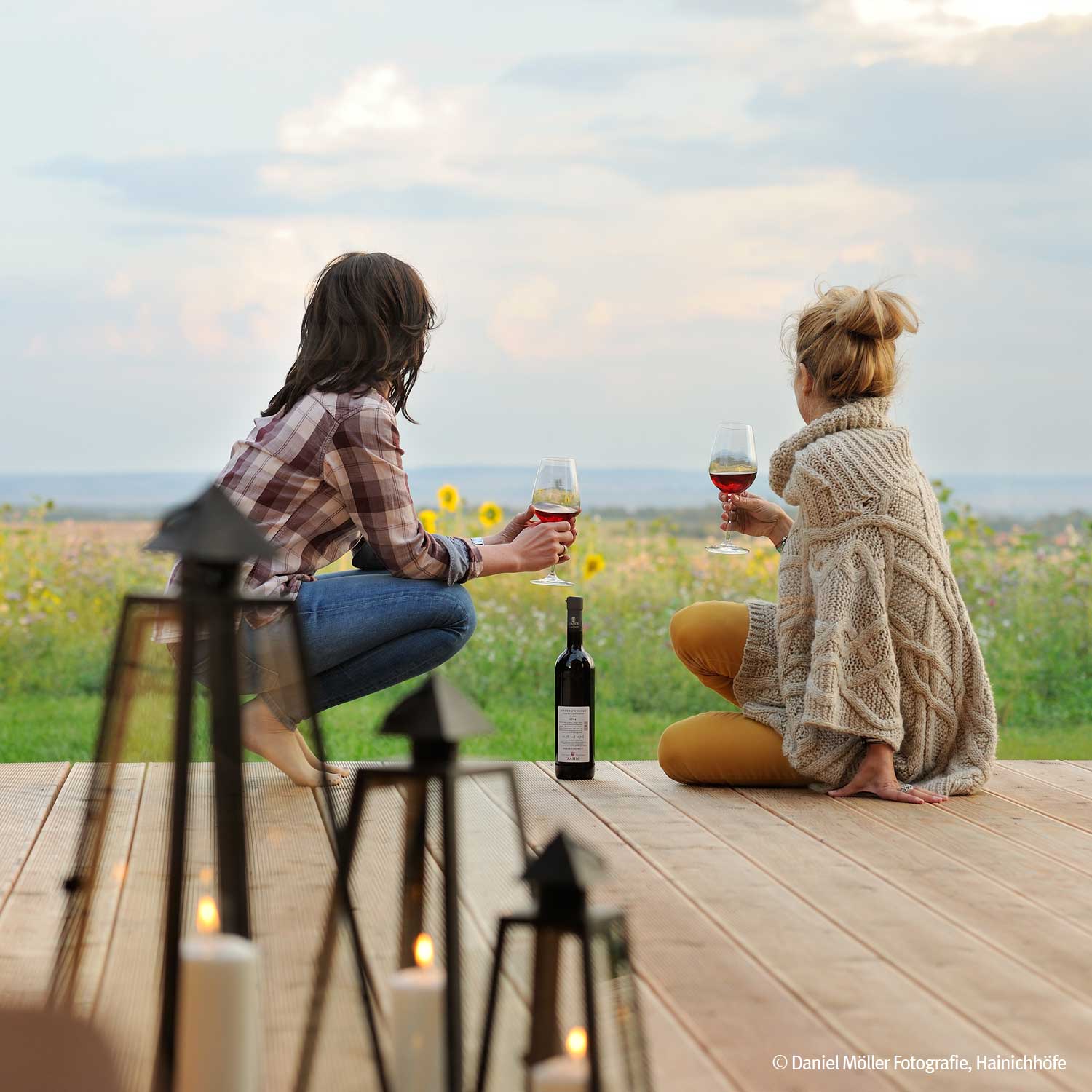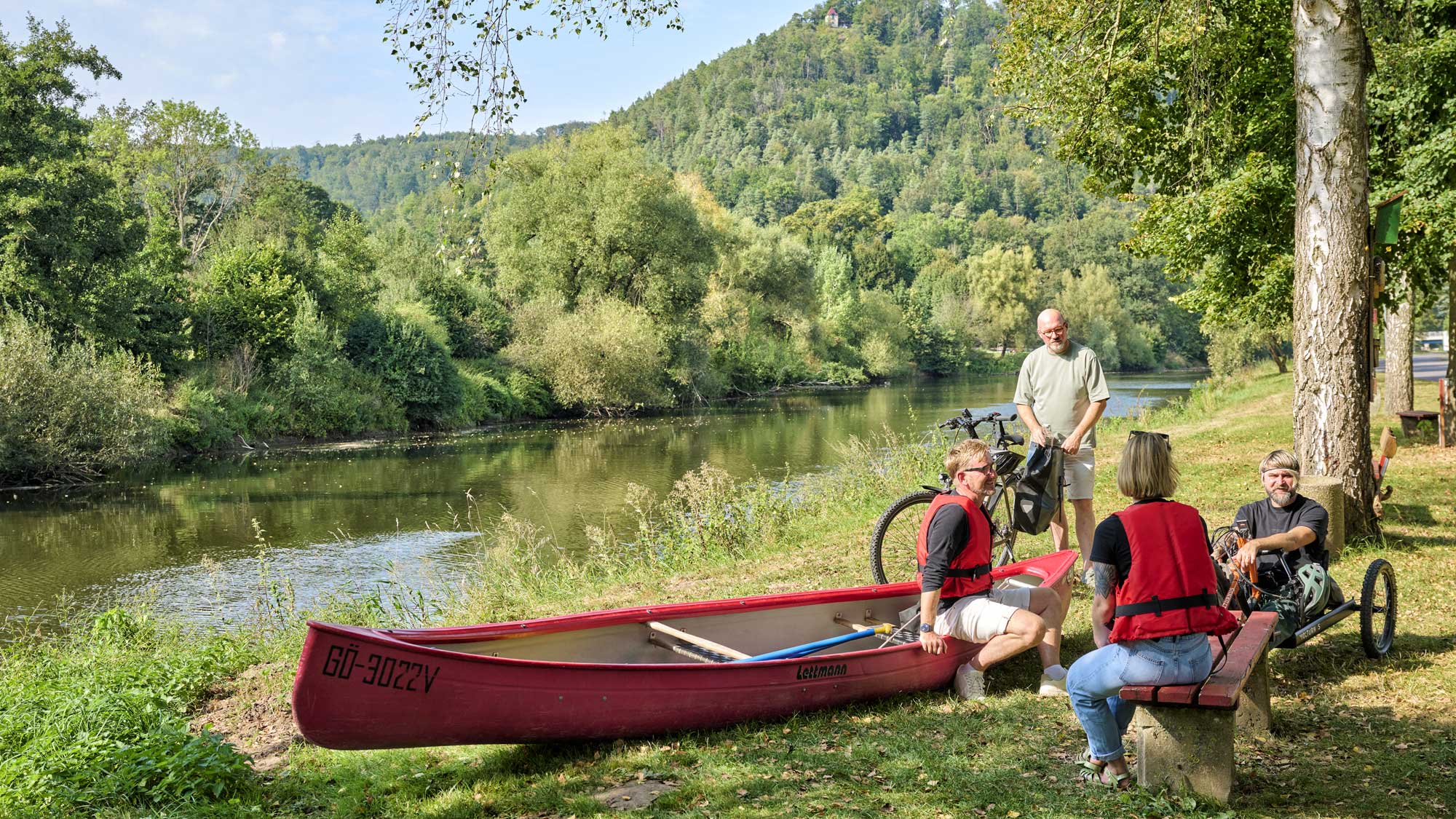You're in the right place! Whether in nature, in the middle of the city, for families, in the countryside, historic or traditional: among Thuringia's TOP hosts, everyone will find exactly the right address.
Glass baubles at Christmas
Traditions and customs from Thuringia
Hand-blown and hand-painted Christmas tree baubles have a long tradition in the Thuringian Forest. Lauscha, the town described above, is considered the birthplace of glass Christmas tree decorations and artistic glass-blowing. These beautiful decorations are made by hand to this day, and over the years they have spread from Thuringia to countries around the world.
Birthplace of the Christmas tree bauble
Legend has it that, in 1847, a poor glass-blower from Lauscha had the idea of making coloured glass baubles for his Christmas tree. At that time, it was customary to use fruit, nuts or sugared biscuits to decorate the tree. As the glass-blower couldn’t afford expensive walnuts and apples, he made tree decorations out of glass. The earliest record of an order for baubles dates back to 1848. It was found in an old order book belonging to a glass-blower and was an entry for six dozen Christmas baubles of different sizes.
The tranquil town of Lauscha was, however, known for glass-blowing long before that. In the late-16th century, two master glass-blowers from Thuringia – Hans Greiner and Christoph Müller – were granted permission by the duke to run a glass workshop. The two men settled in a valley in the Thuringian Forest and founded the town of Lauscha.
From Lauscha to the world
You may be wondering how these ornate baubles from a humble glass-blower’s workshop came to decorate Christmas trees all over the world.
Well from Lauscha, the baubles first went to the neighbouring town of Sonneberg, where publishers took them along to the Leipzig Fair. From there, the popularity of the colourful glass baubles continued to spread.
Did you know that Sonneberg was a leading centre for toy manufacturing at the time? Publishers from Sonneberg featured nutcrackers in their catalogues long before the famous nutcrackers emerged in the Erzgebirge Mountains. It perhaps comes as no surprise that the crafts of woodcarving and woodturning became established in the Thuringian Forest. The introduction of papier mâché led to a boom in doll manufacturing in Sonneberg, and the town soon became a leading manufacturer of toys. Sonneberg’s publishers, who made these wares available to people all over the world, played no small part in this. You can find more information at the German Toy Museum in Sonneberg.
You may be wondering what is so remarkable about this. But do you know exactly how the glass products got from Lauscha to Sonneberg in those days? They were carried by people on foot, in all weathers and over difficult terrain, right across the Thuringian Slate Mountains. With their heavy load packed in a wicker basket, they followed what was known as the Lauscha glass-blowers’ trail. It was, for the most part, the wives of the glass-blowers who carried the glassware. They made the journey of almost 15 kilometres to Sonneberg to deliver the Christmas tree baubles. These fragile goods were transported like this for about a hundred years from the mid-19th century.
Tip: For an authentic experience, you can retrace the steps of the glass-blowers’ wives on the Lauscha glass-blowers’ trail. But we don’t recommend you carry glass baubles in your backpack!
Kaiser Wilhelm and Winfield Woolworth played no small part in the popularity of Christmas tree baubles. In 1871, Kaiser Wilhelm had a Christmas tree decorated with glass baubles at Versailles. Woolworth discovered the baubles in Sonneberg and was already selling them in his American department stores by the end of the 19th century.

This mouth-blown and handmade ball combines two culturally influential Thuringian traditions: glass blowing and the education and upbringing of children according to Friedrich Froebel. The latter included, among other things, folding paper into stars. The glass ball with Froebels paper star was developed for the Weihnachtsland am Rennsteig®.
By the way, did you know that 2000 Lauscher glass baubles from Thuringia already hung on the Queen's Christmas tree? In 2016, Hereditary Prince Hubertus of Saxe-Coburg and Gotha gave the Queen a very special gift: a stately Nordmann fir with 2000 hand-blown golden glass baubles. Each with a size of 20 cm diameter. The students of the vocational school for glass in Sonneberg had made these baubles by hand over a period of months.
Christmas tree pickles
Staying on the subject of myths and legends surrounding Christmas baubles, a particular kind of tree decoration is especially popular in America – a glass pickle. The ‘Christmas pickle’ is thought to originate from Germany. It is hung on the tree and, as both are green, the pickle is well camouflaged. The first person to spot the pickle is said to have good luck for the following year and receives an extra gift or is allowed to unwrap the first parcel. The Christmas pickle may be a German tradition that has been forgotten or one that has been reintroduced in Germany because of American folklore.
But no matter where this bizarre custom originated, the glass pickle has been manufactured in Lauscha for many years. One local glass-blower even reported that he found a pickle mould among the old moulds belonging to his grandfather and great-grandfather. Well then, give me a pickle and I’ll hang it in my tree!
You can celebrate Christmas 365 days a year in the umpteen glass-blowing workshops in Lauscha. Here, you will discover Christmas displays of all kinds. Indeed many shops are decorated with festive glass ornaments throughout the year. This means that, even in summer, you can get inspiration for your Christmas tree or simply enjoy the yuletide atmosphere. You can also learn about the traditional craft of glass-blowing in open workshops or on guided tours – either by watching glass-blowers at work or having a go yourself. And if you would like to know more, the Museum of Glass Art in Lauscha presents the history of glassmaking from the Middle Ages to the present day.
Pictures: ©Dominik Saure, Thüringer Tourismus GmbH
Accessibility
Did you like this story?
Visitors' information
Angebote
Booking
You might also be interested in ...
















